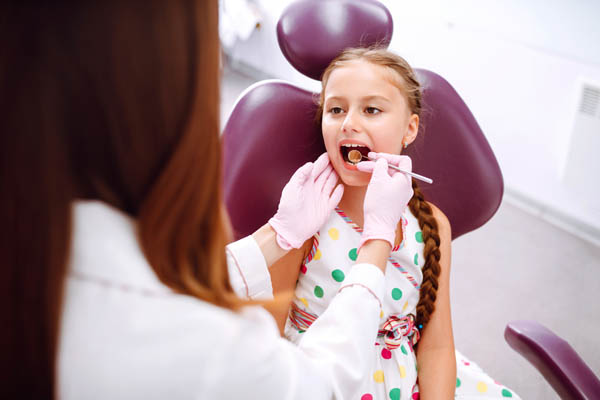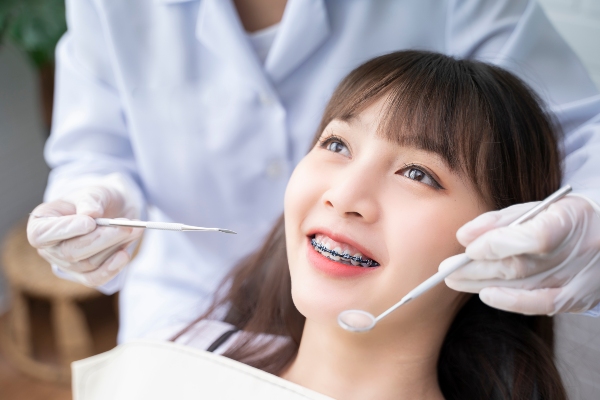What You Need To Know About Early Orthodontic Treatment

Early orthodontic treatment assists with preventing serious, unfixable mouth and teeth alignment problems, or malocclusions, later on. Early treatment may also save time and money. Individuals with bite misalignments or crooked teeth should seek regular orthodontic care as soon as possible to help avoid worse complications and gain a healthier, more functional mouth.
Common kinds of early orthodontic treatment
Orthodontists first perform bite inspections to determine what treatments to use. Here are some of the most commonly used orthodontic treatments:
Braces
Braces are small metal or ceramic brackets that orthodontists glue onto tooth surfaces. They are attached together using wires and rubberbands of varying strength, color, and size. The point of braces is to put gentle constant pressure on teeth to move them a little at a time. Over a set period, orthodontists will adjust and readjust the braces at each visit until your teeth look and feel properly aligned. Braces are especially helpful for early orthodontics as younger teeth and mouths tend to manipulate more easily and, thus, often feel less discomfort.
Clear aligners
Clear aligners are essentially transparent plastic removable braces. They consist of a series of plastic trays that fit each individual's teeth during each stage while simultaneously performing slight modifications to each tooth's placement and the overall bite. Orthodontists take periodic molds of the teeth and mouth to ensure that the clear aligning trays work properly at each stage. Many people like the idea of these removable trays over fixed braces because they find it easier to care for their teeth and they are not visible, unlike most traditional braces.
Retainers
Retainers are designed to keep teeth in place after braces are removed or clear aligner treatment is finished. They are generally made of metal and plastic or just plastic. Some retainers are removable, and some are not. Fixed retainers are generally strips of metal or plastic that orthodontists bond to the backside of the teeth they are maintaining. Orthodontists also use retainers instead of braces to make one or two minor adjustments, such as closing a single gap between teeth or slightly straightening just one or two teeth at a time rather than an entire bite.
FAQs about early orthodontic treatment
Do you still have questions about early orthodontics? Here are the answers to some frequently asked questions:
1. Is my child a candidate for early orthodontic treatment?
The majority of children are candidates for early orthodontic treatment. The best way to determine if your child could benefit from early treatment is to consult with an orthodontist. During the initial consultation, the orthodontist will examine your child’s teeth and jaw structure and develop a personalized treatment plan.
2. What are the benefits of early orthodontic treatment?
Early orthodontic treatment can provide numerous benefits, including:
- Achieving a more aesthetically pleasing smile
- Correcting problems with bite (occlusion) sooner improves chewings function and speech development
- Reducing the likelihood of more serious dental problems later in life
- Creating more space in the mouth for permanent teeth
- Improving self-esteem
3. What is involved in early orthodontic treatment?
The type of early orthodontic treatment your child receives will depend on their individual needs. Some common treatments used in early orthodontics include:
- Braces: Braces are the most common type of orthodontic treatment. They use metal brackets and wires to move teeth into the proper position gradually
- Retainers: Retainers are often used after braces to hold teeth in their new, correct positions. They can also be used to treat mild cases of misalignment
- Palatal expanders: Palatal expanders are devices used to widen the upper jaw. This helps make room for teeth that are crowded or misaligned
4. How long does early orthodontic treatment take?
The length of early orthodontic treatment will vary depending on the severity of the problem and the type of treatment being used. In general, most early orthodontic treatments take six to 18 months to complete.
5. What is the difference between early orthodontics and interceptive orthodontics?
Early orthodontics is a type of interceptive orthodontics. Interceptive orthodontics refers to any orthodontic treatment that is started before all the permanent teeth have come in. Early orthodontics refers to treatment that is started before a child turns seven years old.
The bottom line
Early orthodontic treatment, particularly in younger, more malleable mouths, is a great way to fix some current alignment problems and prevent worse issues down the road.
Let us help you take the first steps to better alignment. Contact our office today to schedule an early orthodontic consultation for your child.
Request an appointment here: https://www.brooksideorthodontics.com or call Brookside Orthodontics at (209) 732-1124 for an appointment in our Stockton office.
Check out what others are saying about our services on Yelp: Read our Yelp reviews.
Recent Posts
Braces are the traditional way to achieve a straight, picture-perfect smile. They gradually shift the teeth into proper alignment over one to three years. To achieve this, patients need to get their braces tightened periodically. This process can cause some discomfort, but there are ways to make the adjustment period more comfortable. It can help…
Braces have been around for centuries and remain one of the most effective ways to straighten teeth. Metal braces have been the most popular type of braces over the past several decades, but there are newer, less conspicuous types like ceramic braces these days.Straightening your teeth improves your overall appearance since the state of your…
Regular visits to the orthodontist are not just something for teenagers or young adults. Parents should start consulting a professional about the child’s orthodontic needs well before the patient has lost all their teeth. It is helpful to know as much as possible about the process of straightening teeth or correcting jaw dysfunctions. Speak to…
Thinking of going for orthodontic treatment but worried about unsightly metal braces? Read on to learn about the advantages of aesthetic braces. For decades, patients had no choice but to straighten their teeth with unsightly braces with metal brackets and wires. This had a tremendous impact on their self-esteem, and many decided to forego braces…


